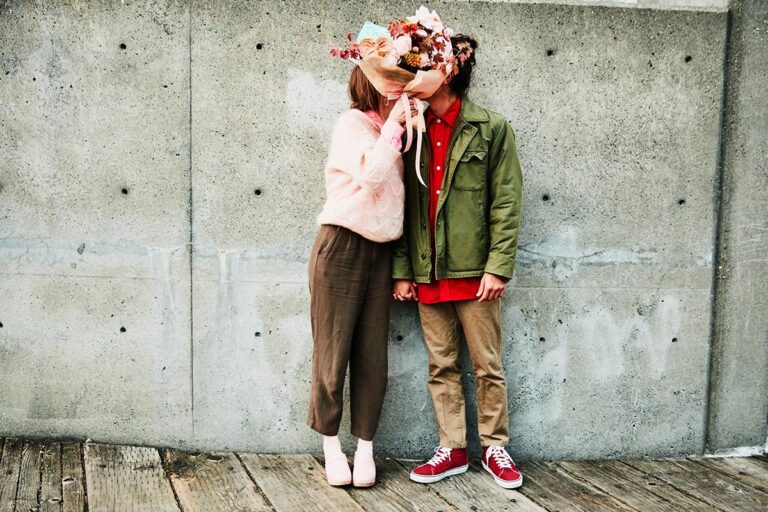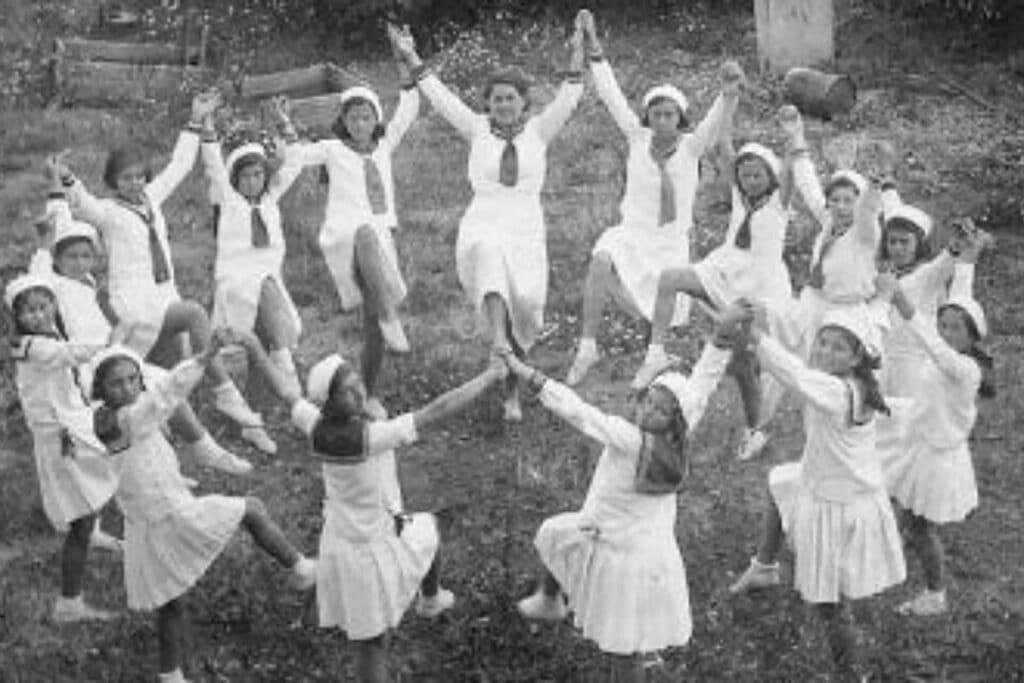
While you may associate Valentine’s Day as the one and only “day of love,” did you know that there’s also a Jewish counterpart? Many Israelis celebrate this day of love in the summer on Tu B’Av. Here’s a rundown on everything you need to know about “Jewish Valentine’s Day.”
What is Tu B’Av?
Tu B’Av is the 15th of the Hebrew month of Av (which takes place in the late summer). In 2023, it began at sunset on Tuesday, August 1, and ended in the evening of Wednesday, August 2.

In Israel, many couples exchange gifts or flowers and celebrate with a romantic dinner or a night out, just like on Valentine’s Day in the rest of the world (yes, Valentine’s Day is observed around the globe). Tu B’Av is also considered an auspicious day for weddings.
The ancient origins of Tu B’Av
Tu B’Av dates back to the ancient days of the Temple, as mentioned in the Talmud (Taanit 30b). Each year on the 15th of the Hebrew month of Av (“Tu,” or ט”ו, represents the number 15 in Hebrew), a matchmaking festival was held in the vineyards of Israel.
Young women would dress in white and dance in the vineyards, while the unmarried men would go there to find a wife.
The women would call out to the onlooking young men as they danced, saying: “Young man, please lift up your eyes and see what you choose for yourself for a wife! Do not set your eyes toward beauty, but set your eyes toward a good family.”
Side note: Judaism has a complicated attitude toward fashion and beauty. You can read more about it here.
The annual matchmaking festival, celebrated on the 15th of Av, also marked the beginning of the grape harvest in Israel. The practice of dancing in the fields — which also happened on Yom Kippur — seems to have ended after the Second Temple was destroyed in 70 CE.
Tu B’Av: One of the happiest days of the Jewish year
The Mishnah (Taanit 4:8) describes Tu B’Av as one of the two happiest days of the year, with the second being, surprisingly, Yom Kippur.
According to the Mishnah, Rabban Shimon ben Gamliel declared, “There were no days as joyous for the Jewish people as the 15th of Av and Yom Kippur.”
The Talmud (Taanit 30b) states that Yom Kippur is seen as joyous because of the opportunity for the Jewish people to receive atonement for sins. However, the specific joy of Tu B’Av isn’t as clear, so the Talmud offers several explanations. Here are three of them:
- Tu B’Av marked the time when Jews, a generation after entering the Land of Israel, could intermarry among tribes. This was significant — initially, to maintain land inheritances within tribes, they refrained from intertribal marriages. The lifting of this restriction on Tu B’Av signified reconciliation and unity.
- Tu B’Av celebrates the reconciliation with the tribe of Benjamin. After a horrific incident known as “the concubine at Givah,” the other 11 tribes waged war against Benjamin, leading to its near-annihilation. Following this, they vowed not to intermarry with Benjamin’s survivors (Judges 19 – 21). On Tu B’Av, this ban was lifted, reinstating marital ties with the tribe of Benjamin.
- Tu B’Av marked the end of divine punishment after the sin of the spies. Here’s the context: After the sin of the spies, where 10 of the 12 spies brought back negative reports about Canaan, God decreed that the entire generation that left Egypt would not enter the Promised Land but would die in the desert. This decree spanned 40 years. However, on Tu B’Av of the last year, those who were still alive realized that they were no longer under this divine punishment and would ultimately reach Canaan.
How has Tu B’Av evolved over the years?
In the 2,000 years since the ancient matchmaking festivals ended, Tu B’Av has evolved in a number of ways.
For centuries, many Jewish communities have regarded Tu B’Av as an auspicious date for weddings, maintaining its reputation as a day of love.
After the destruction of the Second Temple, Tu B’Av was not really celebrated until it experienced a minor resurgence in the 19th century during the Haskalah (Jewish Enlightenment).

One of the first major revivals of the celebration in the modern age came in the early 1900s with Beit Yaakov, a movement that aimed to educate Orthodox Jewish girls.
Originating in Eastern Europe, members of this movement celebrated Tu B’Av by journeying into the woods near Skawa, Poland, singing and dancing in a celebration participants described as a “mystical” experience.
In 1912, in what was then Ottoman Palestine, the HaZvi newspaper (published by the pioneer of the revival of Hebrew, Eliezer Ben-Yehuda) highlighted a week-long celebration of Tu B’Av filled with balls and festivities.
How do Israelis celebrate Tu B’Av today?
In recent decades, Tu B’Av has become increasingly popular in Israel. According to a 2019 survey by the Jewish People Policy Institute, more Israelis celebrate Tu B’Av than Valentine’s Day, though many choose to celebrate both.
In modern Israel, Tu B’Av mirrors Valentine’s Day. Couples gift flowers and chocolates, and numerous events nationwide offer unique romantic experiences.
One popular Tu B’Av date option is going to a concert. Many Israeli artists schedule special performances for Tu B’Av, which quickly sell out.
Many couples choose to go out to dinner or have a romantic meal at home, or attend special festivals held in honor of the day. However, parties and other large events are more common on Valentine’s Day than on Tu B’Av.
If you happen to be in Israel on Tu B’Av and are seeking a more traditional Tu B’Av experience, consider visiting Neot Kedumim. This park, dedicated to recreating the Bible’s physical setting, hosts events where couples can wander under a full moon, as storytellers share romantic tales from Jewish tradition and musicians play gentle harp music. Stalls with food and beer are also set up in the park for refreshments.
If you’re looking for a more modern affair, the city of Rishon Lezion has been known to transform streets into vibrant hubs for the holiday of love. The festival includes a series of concerts, light shows, performances, and plenty of food and beverage options.
These festivities are just a glimpse into how Israelis honor Tu B’Av. So, how will you celebrate the Jewish Day of Love?
Read more: What is the difference between Valentine’s Day and Tu B’Av?
Originally Published Jul 19, 2023 10:50AM EDT
